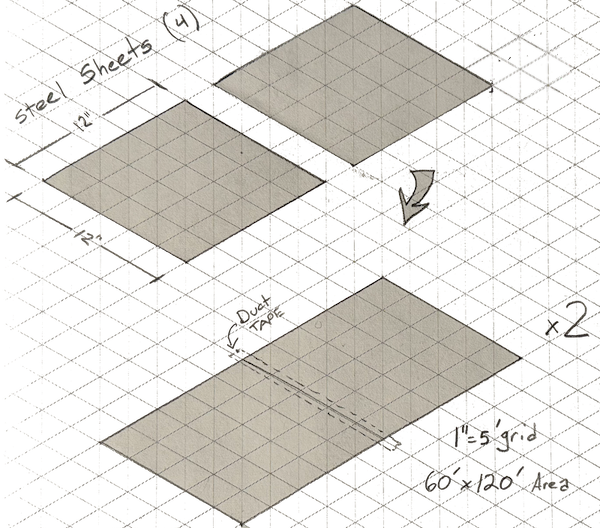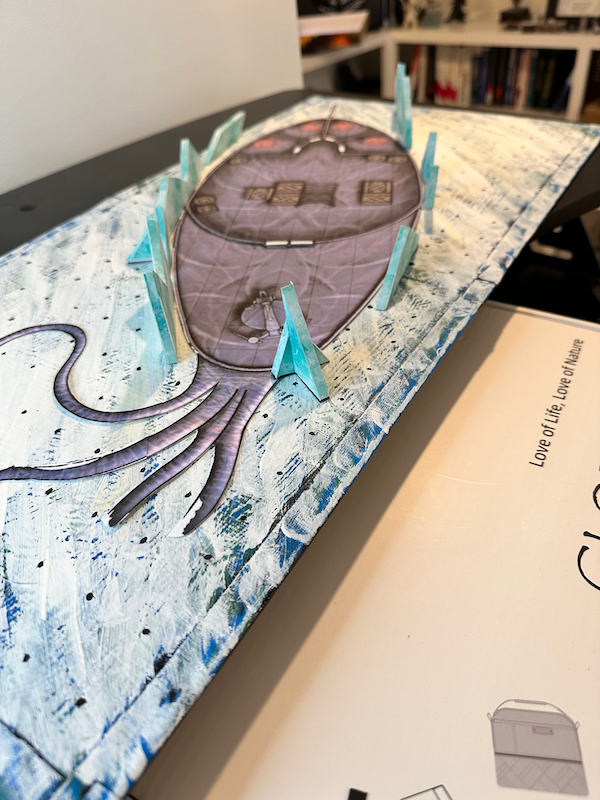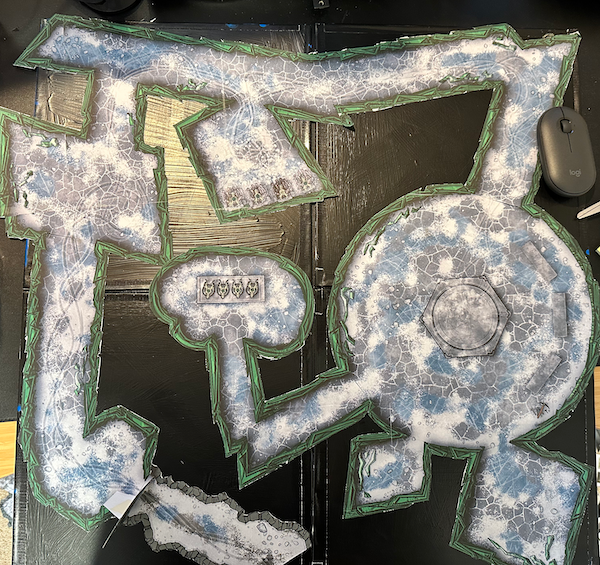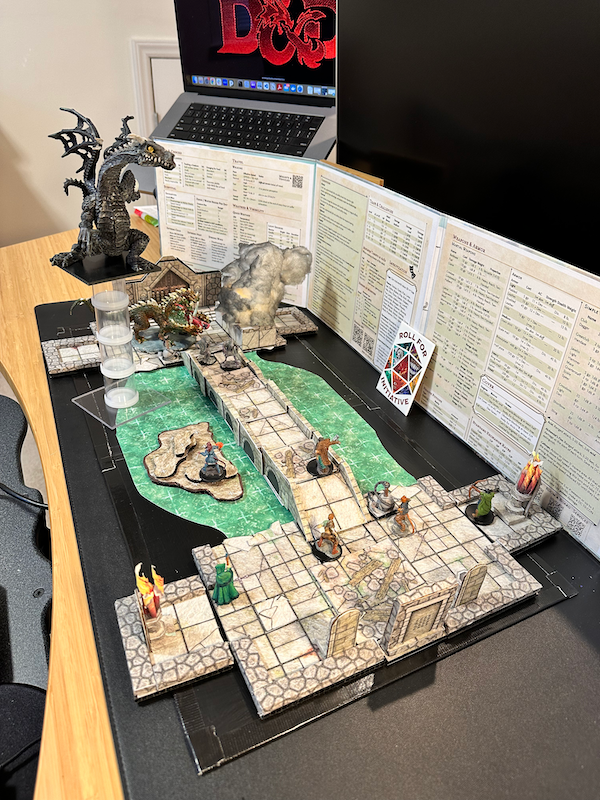Magnets all the way down
As mentioned in a previous post, I'm a big fan of print-and-paste terrain tiles and battlemaps. Of course, being made of paper, they're essentially weightless.
One thing that has always annoyed me about dungeon tiles is when the table inevitably gets bumped, they are prone to jostling around, toppling miniatures, and, well, it's not always been pretty. With paper terrain, this problem is amplified. I've seen folks solve for this in several ways: clever use of tabs, or clips, or even bobby pins, but in my mind, nothing really beats the ease-of-use, no-muss-no-fuss, rock solid stability of having a magnetic (ferrous) base. And, of course, the liberal use of craft sheet magnets**. Neodymium magnets work great, of course, but can be expensive and can sometimes provide a little "too much" holding power. With a base of carbon steel, even cheap craft or "refrigerator" type magnets hold well, especially when applied to the underside of terrain elements with as much surface area contact as a dungeon tile, or even a wallsegment.
In my experience, anything about 1/2" or wider tends to stick well to a steel base using thin, relatively cheap craft magnets**. These are easy to cut, feature a peel-and-stick adhesive that holds quite well, and are a cinch to apply (as opposed to placing tiny neodymium magnets, or worrying about their orientation, etc). They even make varieties of craft magnet sheets that have a printable surface, so you can skip the paste step of print-and-paste terrain making, if you're in a hurry.
To setup my terrain base, I purchased four 12"x12"x1/32" A653 carbon steel sheets**. These are quite sturdy, almost heavy, and will not budge when incidental contact is made at the table.
I book-hinged two sets of two sheets with duct tape. I used black Gorilla Glue brand, because it has a strong adhesive, but it's likely many kinds of tape could be used for this application. Something like this:

This yields two 12"x24" terrain bases, which translates to a 60' x 120' tactical grid using a standard 1" = 5' scale. These can be placed end-for-end next to each other to create a long, 60' x 240' rectangular base, which is great for running tactical chase sequences without a lot of mental gymnastics, or they can be placed side-by-side next to each other for a 120' x 120' square base, which can accomodate a lot of dungeon crawling. Of course, other irregular configurations are also possible.
To ensure the metal wouldn't scratch table surfaces, I ripped a long strip of duct table in half and taped around all the exposed edges. I then primed and sealed with a 50%/50% mixture of Mod Podge and black acrylic paint on both sides. On one side of each set of sheets, I then painted an arctic white pattern, since I've been running a bunch of Icewind Dale content lately and needed this. I then laid out a 1" grid pattern with rulers and painted grid dots directly on top of the terrain in a contrasting dark color. I'll likely just paint right over that side as I have need for other terrain types. I intend to keep the reverse side of each matte black with no grid, as I've found this is really handy for laying down dungeon tiles. The "negative space" and color contrast really makes them pop.
Pros:
- Sturdy
- Reversible
- Folds up to 12"x12"
- Can double as an easel/display board
Cons:
- Fairly heavy (this isn't something you probably just "toss in the bag" and forget about
- $$ (I think I got 4 sheets for about $65 or $70)
I'm not a minimalist GM, so I don't mind the added weight, and I think the flexibility of the system is worth the investment.
Here's a few action shots of the system in use:
Arctic Terrain Side with Illithid Nautiloid Interior #

Matte Black Side with Xorvintroth Dungeon Crawl #

Budge-Proof Terrain with Scatter #

**: NOTE: the links above are Amazon Affliate links.
- Previous: RPG Achievement Badges
- Next: Forgotten Realms Travel Matrices

